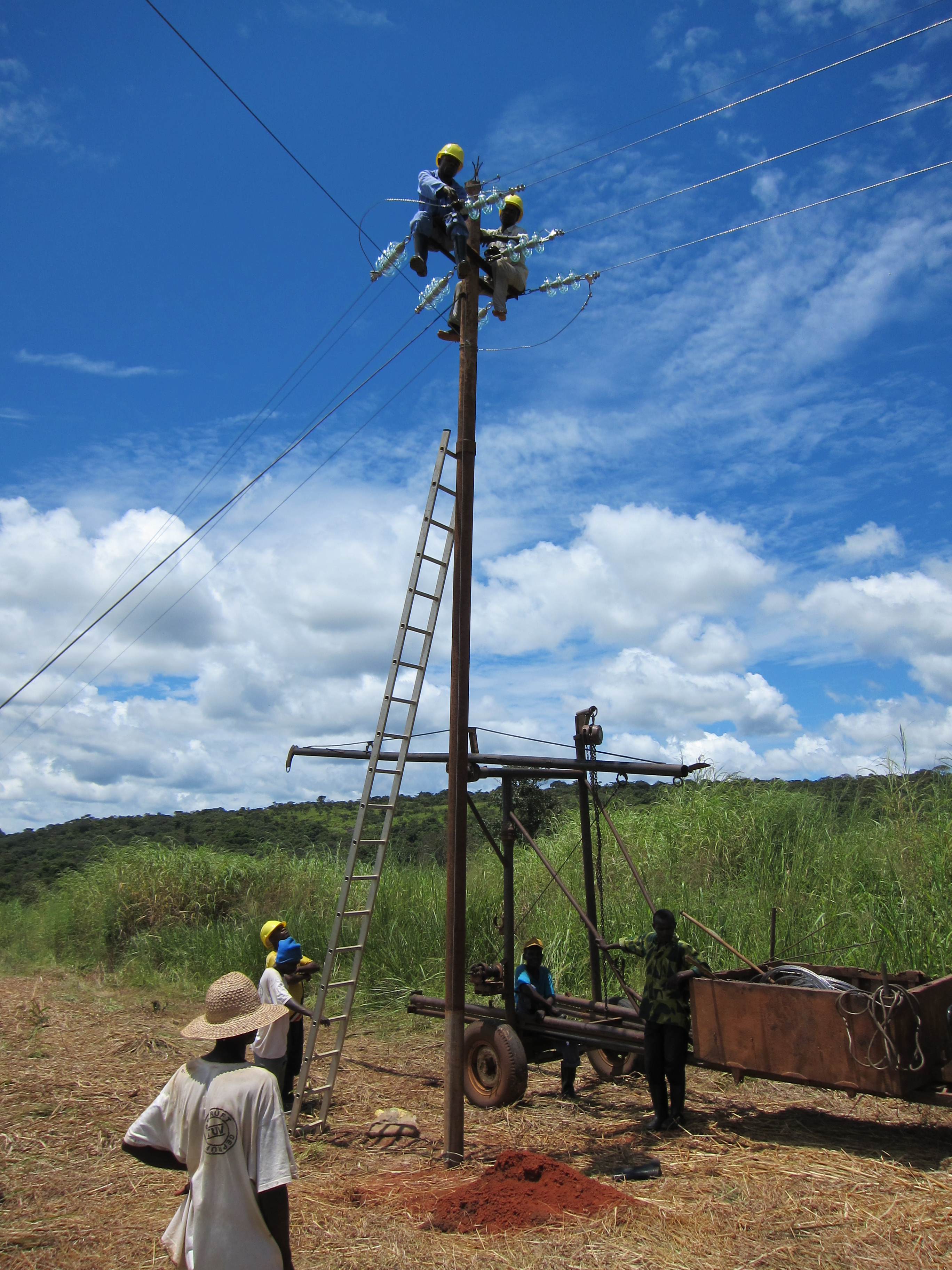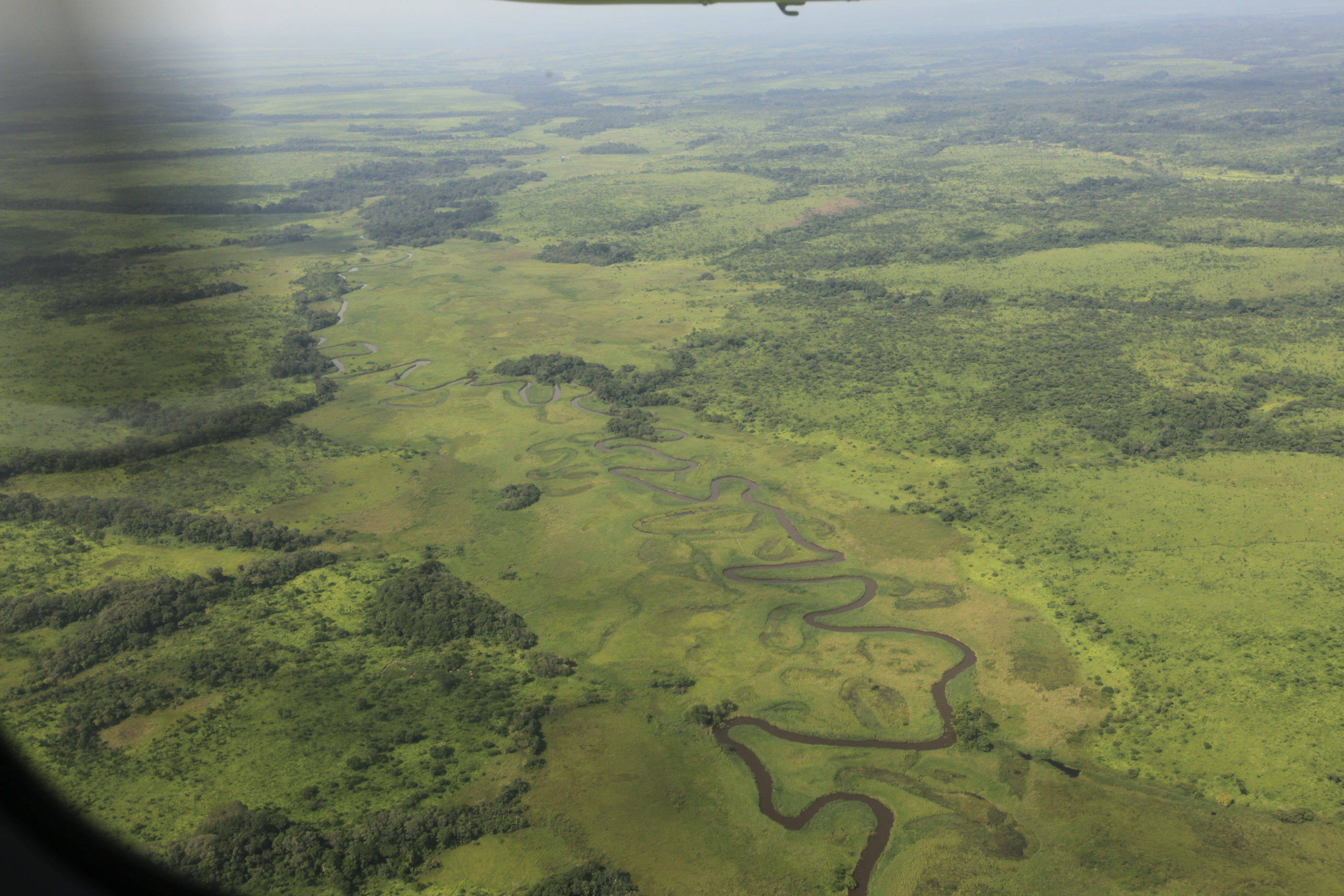DATABASE
ELKAP - Electricity for Kapanga
completed
Country
Democratic Republic Of The Congo
Budget
500.000 - 3M $
Year
2014
Issue
Solutions
Link
www.elkap.org
Abstract
The project consisted of the construction of a 200 kW run-of-river hydro plant at the Rushish waterfalls in the territory of Kapanga (South DRC), the construction of a 30 km off-grid electricity network connecting all public infrastructures and the key small businesses, and the creation of a community-based social business model.
Project Description
Context: The DRC’s rural areas, home to 77% of the 65 million Congolese, have an electrification rate of only 1%. The vast majority practice self-sufficiency farming and 94% use traditional biomass for cooking. Isolated electricity networks powered by small hydro would be profitable, but the installed capacity does not exceed 65 MW. The poor state of transport infrastructure and the lack of a political and legal framework for rural electrification complicate the situation. A typical rural territory (district) is Kapanga in the Katanga Province in the south of the DRC with a growing population of 120,000 inhabitants and an area of 24,700 km2. It is isolated due to its geographical position (e.g. 1,000 km to Katanga’s capital, Lubumbashi), the poor state of the roads and the lack of a bridge over the river Lulua. There is no industry and only little commercial activities other than small trade in fish, caterpillars, fruit and vegetables. Over 90% of the population lives off small-scale farming and fishing. The estimated average GDP per capita is about 1.5 USD/day. Objectives: - To contribute to the achievement of MDGs 1 & 7 in Kapanga by ensuring stable green energy supply - To leverage local economic and social development by promoting sustainable energy options - To improve the local population’s awareness for the potential and advantages of renewable resources Main activities: - Information and awareness raising - Construction and operation of a 200 kW run-of-river hydro plant and 30 km off-grid electricity network - Training of local staff in building and maintaining the hydro-energy plant - Creation of a commercialization agency
BENEFICIARIES
Direct beneficiaires: the 15 institutions of public interest (health centres, schools and public administration) and 300 commercial and domestic end users. Indirect beneficiaries: the 45,000 inhabitants of the towns of Musumba, Ntita and Kapanga
Results
1) Development of public health (SDG3); improved medical interventions and storage of drugs: decreased maternal/infant mortality (MDG4+5;SDG3) 2) Enhanced education by introduction of machinery/PCs: increased literacy and job prospects (MDG2;SDG4) 3) Local income opportunities through maintenance/management of plant/grid (MDG1;SDG1+8) 4) Increased possibilities of women entrepreneurship: reduced dependency (MDG3; SDG5+8) 5) Income generating prospects reduce rural migration: stabilized family /community structures; prevention of precarious jobs, exploitation and growth of urban slums (SDG10) 6) Reduced ICT gap: better education; empowerment of active citizenship (SDG10+16+4) 7) Local administration: citizens’ role in local development strengthened (SDG16) 8) Improved awareness of advantages of renewable energy and environmental issues (SDG13+15) 9) Reduced dependence on fossil energy (SDG7+9) 10) Reduced diesel/firewood/spillage/CO2 emissions (about 1,000t/y): positive environmental impact (MDG7;SDG13+16)
Business Model
Taking into account that the funding for the project came from external grants, an electricity tariff was introduced to assure long term sustainability of the infrastructure. It is designed to pay the utility's variable costs and to replace the equipment before the end of its lifespan. Time per use and interruptible options have been studied to better balance the mini-grid and reflect service costs. A component to increase service access by extending the grid or offering an off-grid PV option for most remote customers is under consultation.
Lessons Learnt
1) To implement a complex project in a ‘failed state’, the collaboration with a headquarter office outside the country is indispensable. In our case, the longstanding local community of Salvatorian Religious managed the technical implementation of the project and used its local social capital whilst the Congregation’s development office SOFIA in Rome took are of the general management of the project including accounting, tenders, public relations and project management support. 2) The difficult logistics (trucks needed 6 days to reach Kapanga and no transport was possible during the rain season) and lack of a legal-institutional and regulatory framework caused major delays and almost compromised the success of the project.
Key Feature
1) ELKAP is a unique example of cooperation with the Congolese authorities: the Katanga Province provided 15% co-funding and key logistical and political support. 2) Our community-based social business model: The local community of Salvatorian Religious, who coordinated the local management of the project, created the Congolese non-profit organisation ELKAP to manage the power plant and the electricity distribution as a social business as well as to promote the electrification and social development of Kapanga. Income generated through the operation of the hydropower plant and the distribution network is being used for maintenance and salary costs. The surplus is to be invested in the extension of the power plant and the transmission line or in social projects in Kapanga. Moreover, ELKAP has a Protection Committee composed of 19 representatives of the local civil society and public authorities. It ensures local ownership and protects ELKAP against harassments and intrigues in three ways: • administratively: in facilitating the NGO to deal with state services and third parties; • in terms of security, by providing 2-3 soldiers to take care of the physical custody of the premises; • by providing formal advice during the annual meetings.
Other significant information
ELKAP showed that it is possible even in the DRC to develop rural electrification projects using the existing hydroelectric potential and local labour, despite the lack of basic infrastructure for transport and a transparent legal and institutional context, if one has strong support of the local authorities and a partnership with an international organization. Moreover, our experience allows us to start ELKAP FOR ALL, the upscaling of the first project to meet the needs and demand of the population: extensive growth (expansion of the network to other villages and neighbourhoods) and intensive growth (connecting people who are not yet connected in the villages which received electricity through ELKAP I). The new project includes the construction of a second hydropower plant (1.6 MW production) and will provide access to energy services to 70,850 people and connect 3,000 homes. We are fundraising for ELKAP II, and the Katanga Province will co-finance the project and undertake key infrastructure works (road repair and construction of a bridge over the Lulua River).
Main Donor
European Commission
(International agencies)
Implementing Actor
ELKAP asbl (NGOs)


